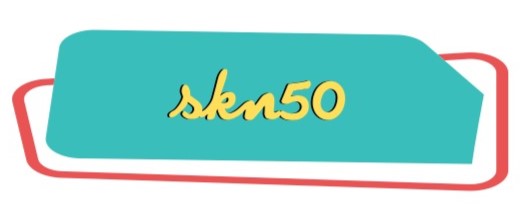The Sharpe Ratio is a essential monetary metric that evaluates the risk-adjusted return of an funding, corresponding to a mutual fund. Developed by Nobel laureate William F. Sharpe in 1966, this ratio helps traders perceive how a lot extra return (over the risk-free fee) they’re receiving for every unit of threat undertaken. Within the context of mutual funds, the Sharpe Ratio is instrumental in assessing whether or not the returns are a results of prudent funding selections or extreme risk-taking.
Understanding the Sharpe Ratio
At its essence, the Sharpe Ratio gives perception into the efficiency of an funding in comparison with a risk-free asset, after adjusting for its threat. It quantifies the extra return an investor earns by taking up extra threat, thereby facilitating a comparability between completely different investments on a risk-adjusted foundation. Within the realm of mutual funds, the Sharpe Ratio serves as a essential indicator for traders to grasp the return of an funding relative to its threat. The next Sharpe Ratio signifies that the funding has offered higher risk-adjusted returns, making it a beneficial device for evaluating mutual funds.
The Sharpe Ratio Components
The formulation for calculating the Sharpe Ratio is:
Sharpe Ratio = (Rp – Rf)/SD
The place:
Rp = Anticipated return of the portfolio or mutual fund.
Rf = Danger-free fee of return, sometimes represented by authorities securities like Treasury payments.
SD(p) = Customary deviation of the portfolio’s extra return, indicating the funding’s volatility.
Breaking Down Every Part
1. Anticipated Portfolio Return (RP)
This represents the anticipated return from the mutual fund over a particular interval. It displays the fund’s efficiency primarily based on its investments.
2. Danger-Free Charge (RF)
That is the return on an funding with zero threat, serving as a benchmark for evaluating the mutual fund’s efficiency.
3. Customary Deviation (SD)
This measures the variability or volatility of the mutual fund’s returns. The next customary deviation signifies higher fluctuations in returns, signifying increased threat.
How the Sharpe Ratio is Utilized in Mutual Funds
Buyers and mutual fund advisors make the most of the Sharpe Ratio to judge and evaluate the risk-adjusted efficiency of mutual funds. A mutual fund with a better Sharpe Ratio is taken into account superior when it comes to risk-adjusted returns in comparison with one with a decrease ratio. Because of this for every unit of threat taken, the fund with the upper Sharpe Ratio gives extra return. As an illustration, if Fund A has a Sharpe Ratio of 1.5 and Fund B has a ratio of 1.0, Fund A gives higher returns per unit of threat.
Sensible Instance:
Take into account two mutual funds:
Fund A:
Anticipated Return (Rp): 12%
Danger-Free Charge (Rf): 3%
Customary Deviation (SD): 8%
Fund B:
Anticipated Return (Rp): 15%
Danger-Free Charge (Rf): 3%
Customary Deviation (SD): 12%
Calculating the Sharpe Ratios:
Fund A = (12% – 3%)/8% = 1.125
Fund B = (15% – 3%)/12% = 1.0
On this situation, regardless of Fund B having a better anticipated return, Fund A has a better Sharpe Ratio, indicating higher risk-adjusted efficiency.
Advantages of the Sharpe Ratio in Mutual Funds
1. Danger-Adjusted Efficiency Measurement
The Sharpe Ratio gives a standardized methodology to evaluate how a lot return an funding earns relative to the danger taken, aiding within the number of mutual funds that align with an investor’s threat tolerance.
2. Comparative Evaluation
It permits traders to check completely different mutual funds on a degree taking part in area, contemplating each threat and return, facilitating extra knowledgeable funding selections.
3. Portfolio Diversification Insights
A declining Sharpe Ratio could point out the necessity for diversification to optimize risk-adjusted returns, guiding traders in adjusting their portfolios accordingly.
Limitations of the Sharpe Ratio in Mutual Funds
1. Assumption of Usually Distributed Returns
The Sharpe Ratio assumes that funding returns are usually distributed, which can not at all times be the case, probably resulting in deceptive conclusions.
2. Sensitivity to Customary Deviation
Because it makes use of customary deviation as a measure of threat, the ratio will be influenced by excessive return values, which can not precisely mirror the everyday efficiency of the mutual fund.
3. Ignores Draw back Danger
The Sharpe Ratio doesn’t differentiate between upside and draw back volatility. Different metrics, just like the Sortino Ratio, focus particularly on draw back threat, offering a extra nuanced threat evaluation.
Conclusion
The Sharpe Ratio is a necessary device for traders and mutual fund advisors to evaluate the risk-adjusted efficiency of mutual funds. By contemplating each the returns and the dangers related to an funding, it gives a complete view of a fund’s efficiency. Nevertheless, whereas it gives beneficial insights, it’s essential to make use of the Sharpe Ratio along side different metrics and qualitative components when making funding selections. A holistic method ensures a extra correct analysis of mutual fund efficiency, guiding traders towards knowledgeable and strategic selections.Incorporating the Sharpe Ratio into your mutual fund funding planning can improve your capacity to pick funds that align along with your monetary targets and threat tolerance. Consulting a mutual fund funding planner might help you higher perceive Sharpe Ratios and incorporate them right into a complete funding technique.


